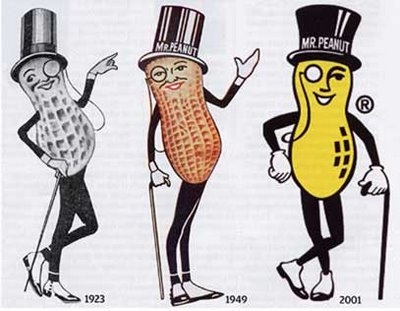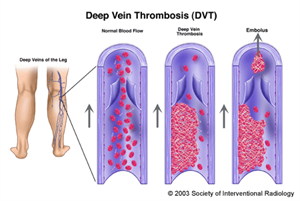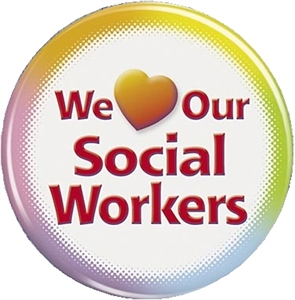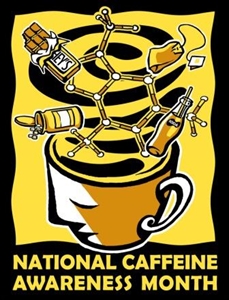National Peanut Month on March, 2025: poll how will you be celebrating national peanut month?
March, 2025 is National Peanut Month 2025.
As an Amazon Associate I earn from qualifying purchases.

by watching charlie brown and snoopy

in america where are the peanut farms....?
There are about 50000 peanut farms in America...
* Peanut butter is the leading use of peanuts in the USA.
* Peanut butter was the secret behind "Mr. Ed," TV's talking horse.
* It takes about 540 peanuts to make a 12-ounce jar of peanut butter.
* There are enough peanuts in one acre to make 30,000 peanut butter sandwiches.
* Peanut butter was first introduced to the USA in 1904 at the Universal Exposition in St. Louis by C.H. Sumner, who sold $705.11 of the "new treat" at his concession stand.
* The oldest operating manufacturer and seller of peanut butter has been selling peanut butter since 1908.
* Peanut butter is consumed in 89 percent of USA households.
* The world's largest peanut butter factory churns out 250,000 jars of the tasty treat every day.
* Women and children prefer creamy, while most men opt for chunky.
* People living on the East Coast prefer creamy peanut butter, while those on the West Coast prefer the crunchy style.
* It takes two grindings to make peanut butter. The intense heat produced from one, long grinding would ruin the flavor of the peanut butter.
* November is Peanut Butter Lovers Month.
* Arachibutyrophobia is the fear of getting peanut butter stuck to the roof of your mouth.
* The average child will eat 1,500 peanut butter and jelly sandwiches before he/she graduates high school.
* The world's largest peanut butter and jelly sandwich was created in Oklahoma City, OK, on September 7, 2002, by the Oklahoma Peanut Commission and the Oklahoma Wheat Commission. The PB & J sandwich weighed in at nearly 900 pounds, and contained 350 pounds of peanut butter and 144 pounds of jelly. The amount of bread used to create the sandwich was equivalent to more than 400-one pound loaves of bread. Now that's one giant sandwich!
* Sixty percent of consumers prefer creamy peanut butter over crunchy.
* The patent for peanut butter was awarded to Dr. John Harvey Kellogg in 1895.
* The amount of peanut butter eaten in a year could wrap the earth in a ribbon of 18-ounce peanut butter jars one and one-third times.
* Americans spend almost $800 million a year on peanut butter.
* Americans eat enough peanut butter in a year to make more than 10 billion peanut butter and jelly sandwiches.
* Spread the word - Peanut butter is the leading use of peanuts in the USA!
So, you see why I can't mention every place they are grown?
* The peanut is not a nut, but a legume related to beans and lentils.
* Peanuts are naturally cholesterol-free.
* Peanuts account for two-thirds of all snack nuts consumed in the USA.
* There are four types of peanuts are grown in the USA. - Runner, Virginia, Spanish and Valencia.
* Four of the top 10 candy bars manufactured in the USA contain peanuts or peanut butter.
* The average American consumes more than six pounds of peanuts and peanut butter products each year.
* March is National Peanut Month.
* Peanuts are planted after the last frost in April or early May.
* Dr. George Washington Carver researched and developed more than 300 uses for peanuts in the early 1900s; Dr. Carver is considered "The Father of the Peanut Industry" because of his extensive research and selfless dedication to promoting peanut production and products.
* Astronaut Allen B. Sheppard brought a peanut with him to the moon.
* The world's largest peanut was 4 inches long and was grown by Earl Adkins in North Carolina.
* Tom Miller pushed a peanut to the top of Pike's Peak (14,100 feet) using his nose in 4 days, 23 hours, 47 minutes and 3 seconds.
* Most USA peanut farms are family-owned and -operated.
* The peanut plant originated in South America.
* As early as 1500 B.C., the Incans of Peru used peanuts as sacrificial offerings and entombed them with their mummies to aid in the spirit life.
* Peanuts contribute more than $4 billion to the USA economy each year.
* The peanut growth cycle from planting to harvest is about five months.
* The average peanut farm is 100 acres.
* The peanut plant produces a small yellow flower.
* Americans eat more than 600 million pounds of peanuts (and 700 million pounds of peanut butter) each year.
* Peanuts flower above ground and then migrate underground to reach maturity.
* Two peanut farmers have been elected president of the USA - Thomas Jefferson and Jimmy Carter.
* Adrian Finch of Australia holds the Guinness World Record for peanut throwing, launching the lovable legume 111 feet and 10 inches in 1999 to claim the record.
* A mature peanut plant produces about 40 pods that then grow into peanuts.
* Peanuts are a good source of folate, which can reduce the risk of certain birth defects in the brain and spinal cord.
* Ever wonder where the term "Peanut Gallery" comes from? The term became popular in the late 19th century and referred to the rear or uppermost seats in a theater, which were also the cheapest seats. People seated in such a gallery were able to throw peanuts, a common food at theaters, at those seated below them. It also applied to the first row of seats in a movie theater, for the occupants of those seats could throw peanuts at the stage, stating their displeasure with the performance.

ok he is 5 months old?
You shouldn't feed a baby that is under 6 months old any solids.
If you are going to then you should probably wait 5 days between starting new foods because the increased risk of allergies from starting solids before 6 months. You should also avoid highly allergenic foods including: cow's milk, soy, sesame seeds, tree nuts, peanuts, shellfish, and wheat.
If you wait until your baby is physiologically ready to start solids which is between 6-9 months and possibly later and let your baby feed himself/herself then there is no reason to withhold foods or wait a certain amount of time before starting new foods.
All mammals are protected by the same thing -they can't physically eat food until they are physiologically ready to digest it. For humans this means picking up the food, placing it in their mouth, gumming it, moving it back with their tongue, and swallowing it. The most obvious of course it the tongue thrust that newborns have -this reflex actively keeps food out of their body until they can digest it. But the other steps all have safeguards as well.
For healthy, full term infants the ability to eat food develops around 6-9 months. In recent years there have been numerous studies looking at the risks of certain things (allergies, asthma, anemia, etc) in relation to when solids are started and almost all have shown that the lowest risks are when solids are started between 6-9 months.
However it should also be noted that babies with allergies may refuse solids for up to a year, and that breastmilk is nutritionally complete for at least the first year of life despite earlier statements that it is not. An unpleasant feeling in the mouth is often a first sign of allergy and may cause babies to spit out rather than swallow allergenic foods. This is a very useful safeguard that should not be overridden.
...
The following organizations recommend that all babies be exclusively breastfed (no cereal, juice or any other foods) for the first 6 months of life (not the first 4-6 months):
* World Health Organization
* UNICEF
* US Department of Health & Human Services
* American Academy of Pediatrics
* American Academy of Family Physicians
* American Dietetic Association
* Australian National Health and Medical Research Council
* Royal Australian College of General Practitioners
* Health Canada
Why Delay Solids?
...
No, you should wait until he is six months old, unless he is not gaining weight and your doctor advises you to start earlier. This subject keeps coming up, and the answer is still the same: the current recommendations (I didn’t make these up) are to wait until six months before starting solids. Starting foods too early can result in digestive or allergy problems later in life. We have learned that the old guidelines of 4 months are just too soon, and I am willing to bet that in ten years we will be recommending later than 6 months. But for now, the six month guideline seems reasonable. Click here, or here, to read previous FAQ's on starting solids or learn more by reading our Starting Solid Foods article.
WHY WAIT? 6 REASONS
...
...
It appears that a baby's general development keeps pace with the development of his ability to manage food in his mouth, and to digest it. A baby who is struggling to get food into his mouth is probably not quite ready to eat it.
Pureed baby food is 'unnatural'
...
She said children should be fed only with breast or formula milk for six months, then weaned onto solids to improve control over how much they ate.
This could prevent babies becoming picky about food.
[...]
Solids best
After six months, Mrs Rapley said babies were capable of taking food into their mouths and chewing it.
Therefore, feeding them pureed food at this time could delay the development of chewing skills.
Instead, she said, they should be given milk and solid pieces of food which they could chew.
Mrs Rapley argued that babies fed pureed food had little control over how much food they ate, thus rendering them vulnerable to constipation, and running a risk that they would react by becoming fussy eaters later in life.
She blamed the food industry for convincing parents that they should give children pureed food.
She said: "Sound scientific research and government advice now agree that there is no longer any window of a baby's development in which they need something more than milk and less than solids."
...
The babies who participated in the research were allowed to begin at four months. But they were not able to feed themselves before six months. Some of the younger babies picked food up and took it to their mouths; some even chewed it, but none swallowed it. Their own development decided for them when the time was right. Part of the reason for this study was to show (based on a theory of self-feeding) that babies are not ready for solid food before six months. It seems that we have spent all these years working out that six months is the right age and babies have known it all along!
It seems reasonable to predict that if parents choose to provide babies with the opportunity to pick up and eat solid food from birth they will still not be able to do it until around six months. The principle is the same as putting a newborn baby on the floor to play: he is being provided with the opportunity to walk but will not do so until about one year – because his own development stops him. But: everything depends on the baby being in control. Food must not be put into his mouth for him. Since it is very tempting to do this, it is probably safer to recommend that babies should not be given the opportunity to eat solid food before six months.
...
Many parents worry about babies choking. However, there is good reason to believe that babies are at less risk of choking if they are in control of what goes into their mouth than if they are spoon fed. This is because babies are not capable of intentionally moving food to the back of their throats until after they have learnt to chew. And they do not develop the ability to chew until after they have developed the ability to reach out and grab things. Thus, a very young baby cannot easily put himself at risk because he cannot get the food into his mouth in the first place. On the other hand, the action used to suck food off a spoon tends to take the food straight to the back of the mouth, causing the baby to gag. This means that spoon feeding has its own potential to lead to choking – and makes one wonder about the safety of giving lumpy foods off a spoon.
Why not cereal?
...
Take rice cereal, for example. Under conventional American wisdom, it's the best first food. But Butte says iron-rich meat — often one of the last foods American parents introduce — would be a better choice.
Dr. David Ludwig of Children's Hospital Boston, a specialist in pediatric nutrition, says some studies suggest rice and other highly processed grain cereals actually could be among the worst foods for infants.
"These foods are in a certain sense no different from adding sugar to formula. They digest very rapidly in the body into sugar, raising blood sugar and insulin levels" and could contribute to later health problems, including obesity, he says.
The lack of variety in the American approach also could be a problem. Exposing infants to more foods may help them adapt to different foods later, which Ludwig says may be key to getting older children to eat healthier.
...
Cereal is not at all necessary, particularly the baby cereals. Regular (whole grain) oatmeal is more nutritious for your baby.
The truth is, there is nothing special about these foods that makes them better to start out with. Babies don't actually even need rice cereal
...
Meat provides additional protein, zinc, B-vitamins, and other nutrients which may be in short supply when the decrease in breast milk occurs. A recent study from Sweden suggests that when infants are given substantial amounts of cereal, it may lead to low concentrations of zinc and reduced calcium absorption (Persson 1998). Dr. Nancy Krebs has shared preliminary results from a large infant growth study suggesting that breastfed infants who received pureed or strained meat as a primary weaning food beginning at four to five months, grow at a slightly faster rate. Dr. Krebs' premise is that inadequate protein or zinc from complementary foods may limit the growth of some breastfed infants during the weaning period. Both protein and zinc levels were consistently higher in the diets of the infants who received meat (Krebs 1998). Thus the custom of providing large amounts of cereal products and excluding meat products before seven months of age may not meet the nutritional needs of all breastfed infants.
Meat has also been recommended as an excellent source of iron in infancy. Heme iron (the form of iron found in meat) is better absorbed than iron from plant sources. In addition, the protein in meat helps the baby more easily absorb the iron from other foods. Two recent studies (Makrides 1998; Engelmann 1998) have examined iron status in breastfed infants who received meat earlier in the weaning period. These studies indicate that while there is not a measurable change in breastfed babies' iron stores when they receive an increased amount of meat (or iron), the levels of hemoglobin circulating in the blood strea



















